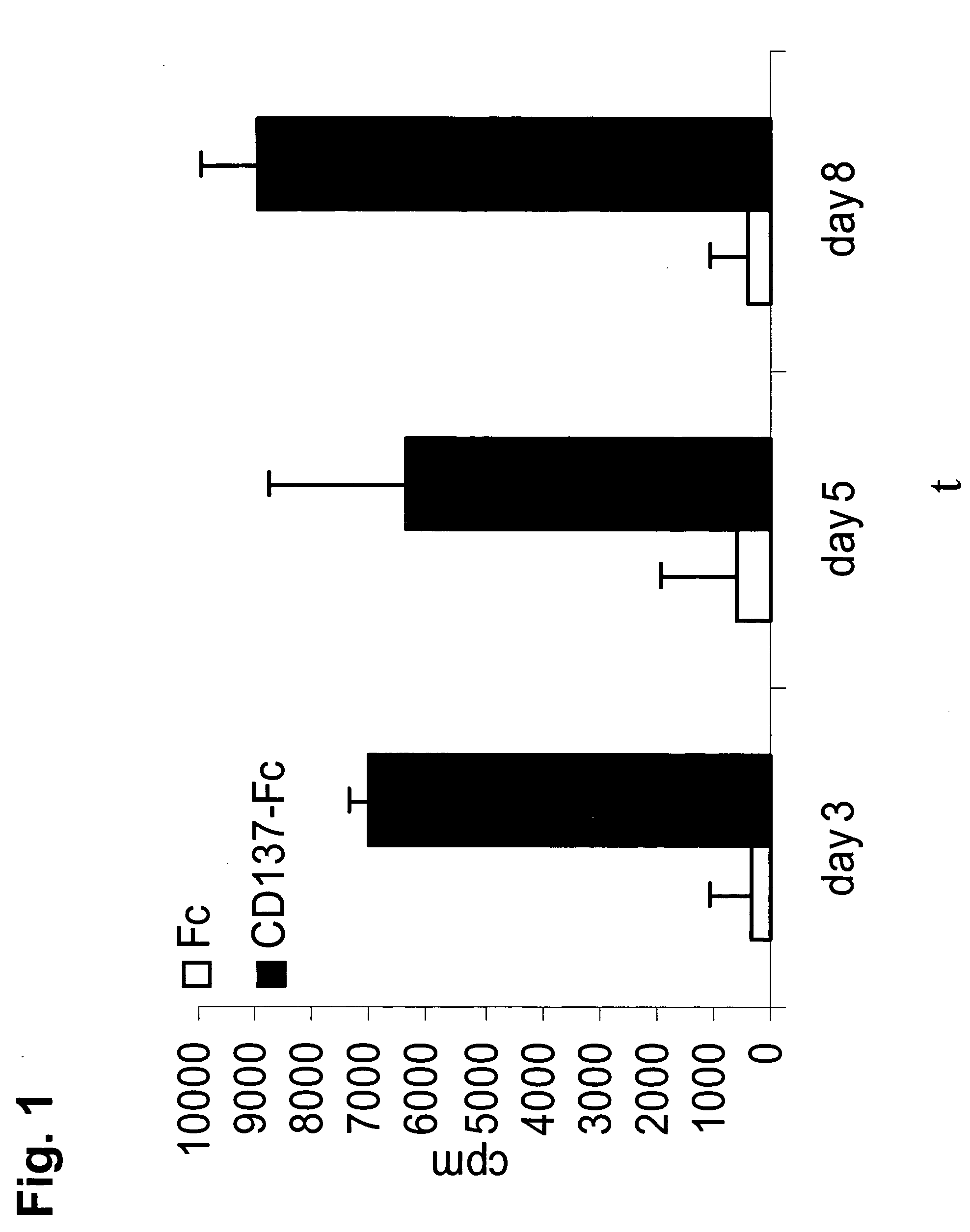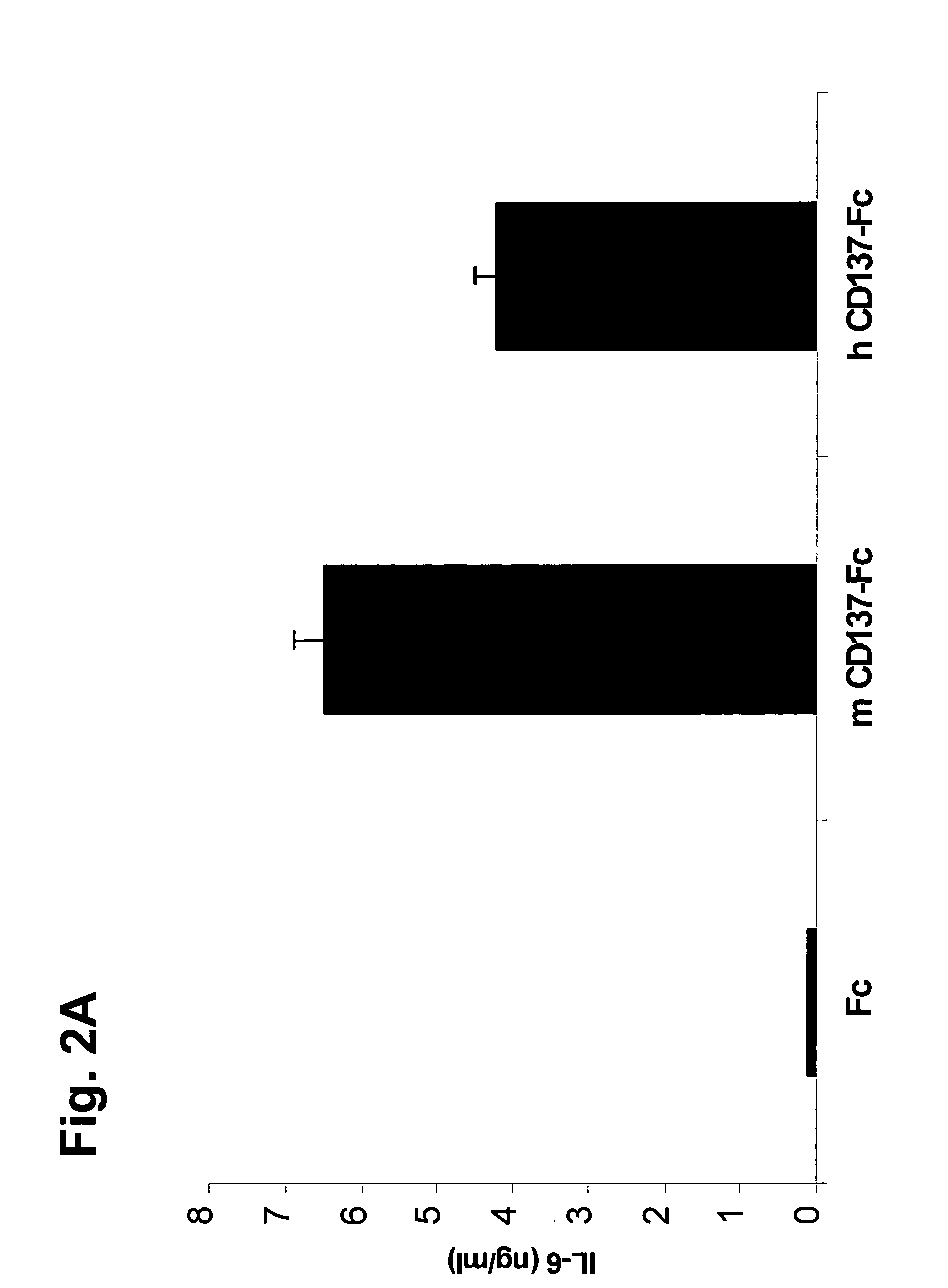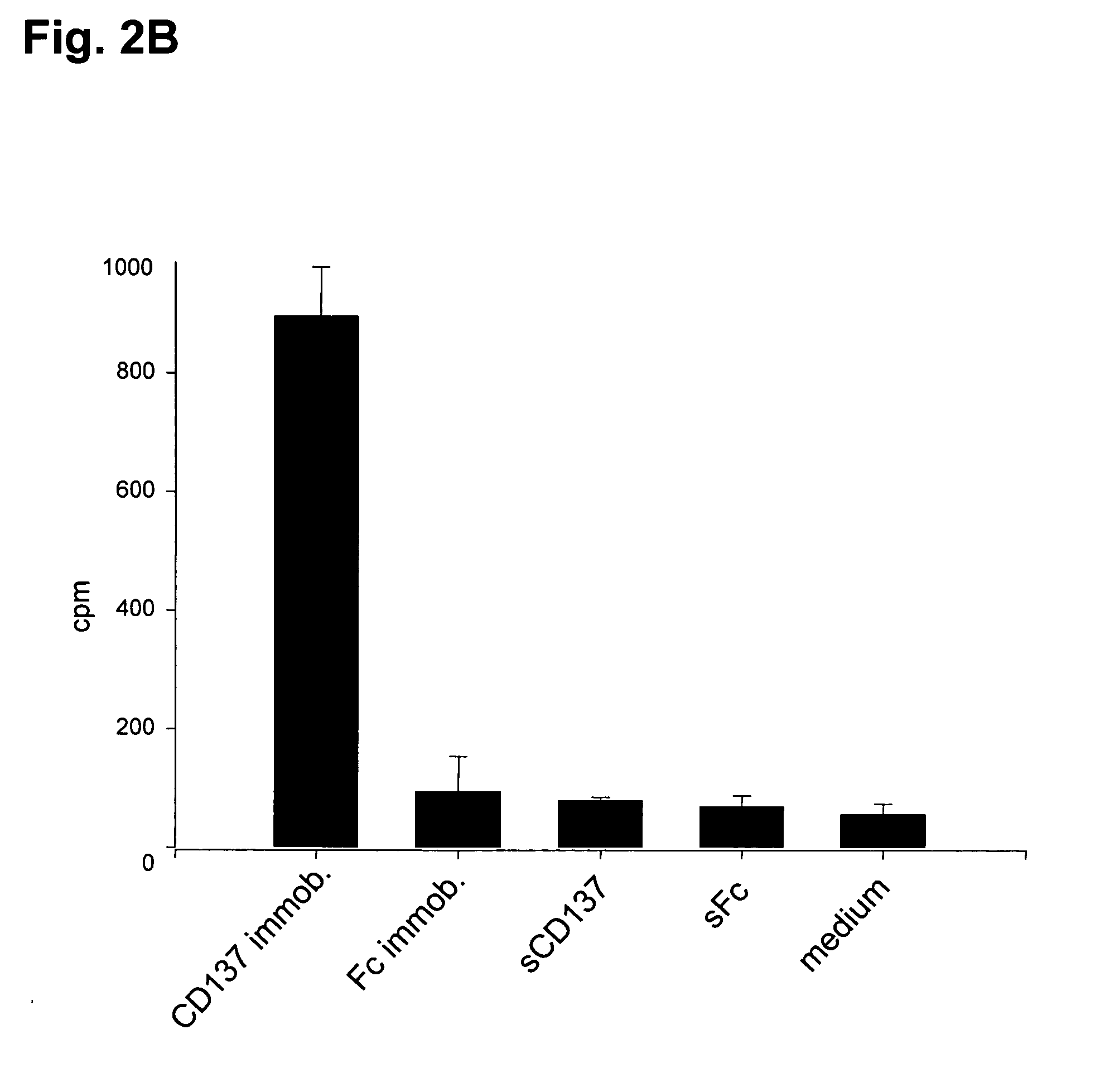Cd137 as a proliferation factor for hematopoietic stem cells
a hematopoietic stem cell and proliferation factor technology, applied in the field of hematopoietic stem cell proliferation induction, can solve the problems of affecting the ability of patients receiving chemo- or/and radiation therapy to reach their target, affecting the ability of patients to enter the cytoplasm, and affecting the use of g-csf. achieve the effect of facilitating the entry of the cytoplasm and enhancing the ability to reach the targ
- Summary
- Abstract
- Description
- Claims
- Application Information
AI Technical Summary
Benefits of technology
Problems solved by technology
Method used
Image
Examples
example 1
Effect of Human CD137 on Peripheral Stem Cells
[0141] Human hematopoietic stem cells were isolated from the bone marrow of healthy donors via their CD34 expression by positive selection using the “Direct CD34 Progenitor Kit” (Miltenyi, Bergisch Gladbach, Germany). 96 well plates were coated with 1 μg / ml of CD137-Fc protein or an equimolar amount of Fc protein (0.5 μg / ml). 105 cells were plated per well and incubated for 3, 5 or 8 days. During the last 12 h the cells were labelled with 0.5 μCi 3H-thymidine. The rate of proliferation was determined with a szintillation counter (Packard, Meriden, Conn.). Each condition was done in triplicates.
[0142]FIG. 1 shows that CD137 is able to induce proliferation of human hematopoietic stem cells. Compared to the Fc control proteins, CD137-Fc protein induces a 8-20 fold increase in DNA synthesis, as evidenced by incorporation of 3H-thymidine. This activity of CD137 is long-lasting, as it is evident at day three, five and eight.
example 2
Effects of Human CD137 on Murine Stem Cells
[0143] In order to be able to test the effects of human CD137 on murine hematopoietic stem cells, crossreactivity of human CD137 with the murine CD137 Ligand was verified. Human CD137 (h CD137 Fc) induced IL-6 secretion in murine monocytes in the same way as it did in human monocytes (see FIG. 2A for induction by human CD137 Fc on IL-6 secretion of murine monocytes). Also murine CD137-Fc was able to induce IL-6 production in murine monocytes (FIG. 2A, m CD137-Fc). The experiment shown in FIG. 2a was carried out by isolating murine peritoneal exudate cells (>90% monocytes) from the peritoneum of BALB / C mice. 96 well plates were coated with 1 mg / ml of human (h CD137-Fc) or murine CD137-Fc (mCD137-Fc) protein or an equimolar amount of human Fc protein (Fc, 0.5 mg / ml). 105 cells were plated per well and incubated for 16 h. Concentrations of IL-6 in supernatantes were determined by ELISA. Each condition was done in triplicates.
[0144] In anothe...
example 3
Comparison of CD137 and G-CSF Induced Stem Cell Proliferation
[0146] So far Neupogen (G-CSF) is being used to reconstitute the hematopoietic system after chemo- or radiation therapy. Therefore, it was interesting to compare the effects of CD137 and G-CSF on the proliferation of hematopoietic stem cells.
[0147] G-CSF is fast acting but its effects last only a few hours (max. 30 h). Due to its short half-life G-CSF is generally administered daily or even several times a day in animal models (Okabe et al., 1990; Aso and Akaza, 1992).
[0148] CD137 has a significantly slower kinetics with a slower onset of activity but also a prolonged period of activity. G-CSF was added daily for the first four days whereas CD137 was only given once on the first day of the experiment.
[0149] Bone marrow cells were isolated from the femur bones of adult NMRI mice. Both ends of the bones were cut and using a syringe the marrow was flushed out with PBS. Tissue particles were removed by a fine-meshed sieve....
PUM
| Property | Measurement | Unit |
|---|---|---|
| Dimensionless property | aaaaa | aaaaa |
| Dimensionless property | aaaaa | aaaaa |
| Dimensionless property | aaaaa | aaaaa |
Abstract
Description
Claims
Application Information
 Login to View More
Login to View More - R&D
- Intellectual Property
- Life Sciences
- Materials
- Tech Scout
- Unparalleled Data Quality
- Higher Quality Content
- 60% Fewer Hallucinations
Browse by: Latest US Patents, China's latest patents, Technical Efficacy Thesaurus, Application Domain, Technology Topic, Popular Technical Reports.
© 2025 PatSnap. All rights reserved.Legal|Privacy policy|Modern Slavery Act Transparency Statement|Sitemap|About US| Contact US: help@patsnap.com



